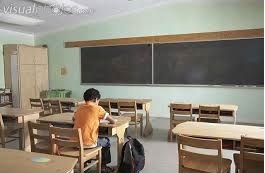 As the school age population goes down, families leave cities for suburbs, and school choice enrollments increase, traditional public schools face a new problem: What to do with empty school buildings? This may be a symptom of a bigger issue. A Pew Trust report stated that between 2005-10, twelve major cities have closed 301 schools and 267 have been sold, leased or repurposed. Forty percent of the reused schools have gone to charters. Chicago has 50 closed school buildings. The city now limits sales to charters because they further reduce public school enrollment. Their concern is logical.
As the school age population goes down, families leave cities for suburbs, and school choice enrollments increase, traditional public schools face a new problem: What to do with empty school buildings? This may be a symptom of a bigger issue. A Pew Trust report stated that between 2005-10, twelve major cities have closed 301 schools and 267 have been sold, leased or repurposed. Forty percent of the reused schools have gone to charters. Chicago has 50 closed school buildings. The city now limits sales to charters because they further reduce public school enrollment. Their concern is logical.
Charters are marketed as a ‘solution’ to educational problems when they are more likely a social rearrangement of communities. As a result, public school enrollments in those areas decline and their schools are viewed as ‘less good’. Students who struggle in charters are likely to return to public schools. Thus, the cycle continues until the enrollments are too low to sustain quality schools. Schools close or are under enrolled and expensive to operate. Similar closure rates occur around the country:
- In 2010 Milwaukee had 27 vacant buildings and Philadelphia had 23. Detroit as closed 72 buildings since 2010. St Louis has 29% in charters and Kansas City has 42%. St Louis gave five schools to KIPP charters for free. (Showmeinstitute.org)
- Portland has about 13 closed schools valued at $113.7 million. Most are repurposed and/or rented. The city is growing, and it makes sense to hold onto the buildings even though they must be maintained. (Oregonlive.com)
- St. Louis has 30 closed schools and 22 are for sale. Four schools are being redeveloped. (NPR.org)
- In Washington D.C., charters occupy 3 of the 21 surplus school buildings. Since 2008, 27 public schools were closed. 40% of D.C. children attend charter schools. About 20% of charters are housed in public school facilities. (focus.dc.org)
The Florida F.I.S.H. list shows 97 vacant school facilities statewide. Florida law requires districts to lease buildings at no cost to charters if they are to be declared as surplus. Most closed schools though are in low income areas and are old. The cost to renovate or demolish them is too high. Thus, they sit and molder.
A Florida 2013 bill would have required districts to offer and maintain, at no cost, empty or half empty space to charters. This new provision would have included facilities whose original purpose had been changed. (FS 1002.33 (18)(e)). These are in better condition. Districts resisted.
Pinellas County has the most vacant buildings with 13. Orange County has eight vacant schools. Brevard County decided to close five schools in 2011-12 because voters denied a one half cent sales tax increase to fund $20 million in repair costs. Broward County went in a different direction. Voters approved an $800 million bond issue that would restore older schools on the east side and add onto growing schools on the west side of the county.
Charters argue that they are not funded properly for their buildings. Florida allocates a per pupil facility cost to charters, but charters may not share in local millage from a public school referendum. Charters want a share. Yet, charters are privately owned and exempt from most of the state school building requirements; their facilities are less expensive and often profitable. For years, public schools received no State capital outlay funds (PECO) for building maintenance and repair. Charter schools received millions. The Florida Consortium of Public Charter Schools legislative priorities for 2015 sought recurring funding sources for PECO capital outlay. The sources for the taxes that generate PECO funds are declining.
The big money is in real estate. This is the battle of the future. It will not be fought only in low income areas. Higher income areas are more stable and more profitable for charters. Charter companies can float bonds and lease buildings back to their own schools. They are making fortunes.
Their should be a level playing field on facility requirements for schools. School reform should not just be about money.